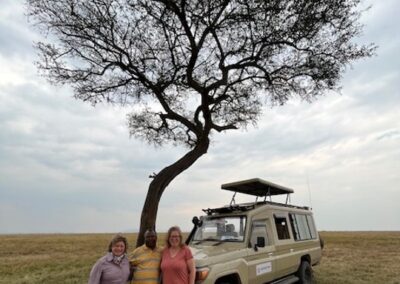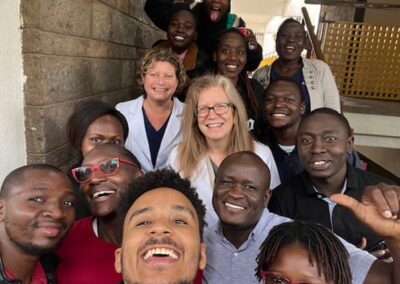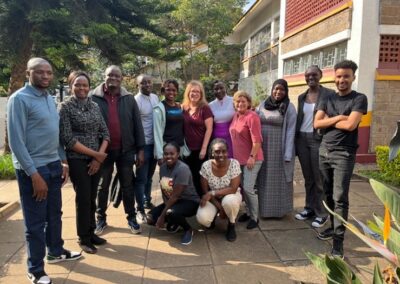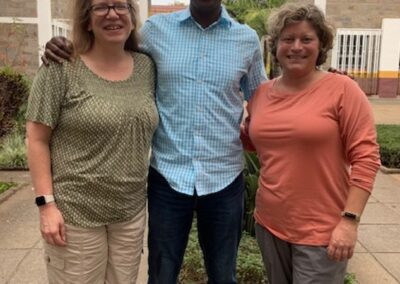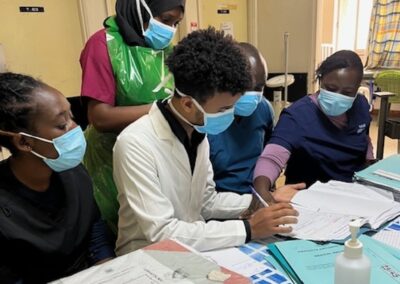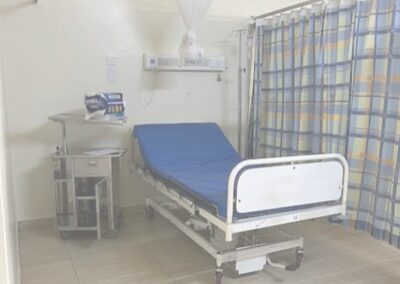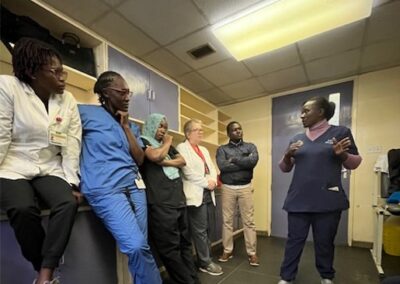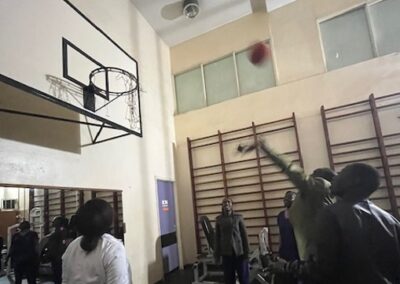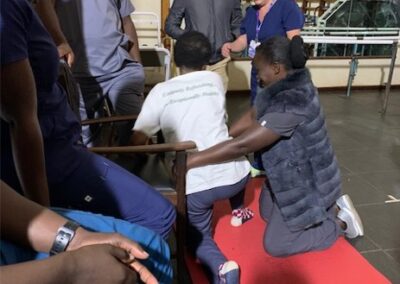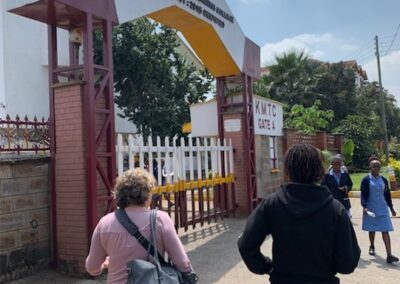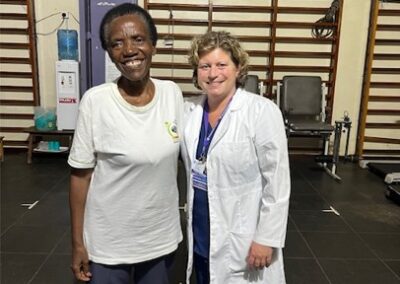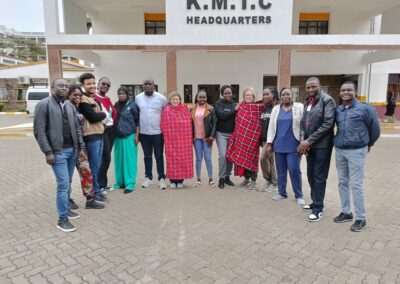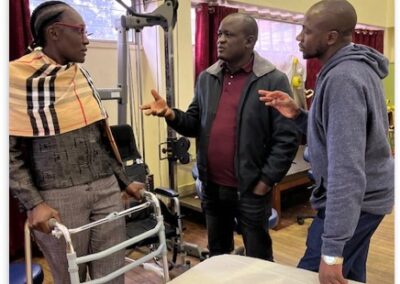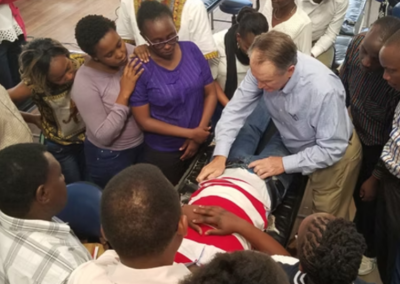Faculty Spotlights >> Victoria Hornyak: Physical Therapist and Educator
Sharing Best Practices in Geriatric Physical Therapy
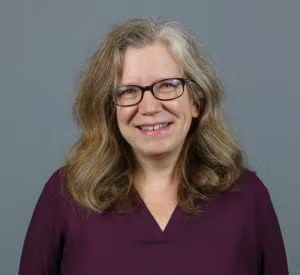
Health and Rehabilitation Sciences
An experienced physiotherapist (PT) assesses the status of an older adult who has had a stroke in Kenyatta National Hospital, a large public medical center in Nairobi, Kenya. Instead of employing basic range-of-motion exercises, he does something different.
He considers the patient’s complex medical history, the medicine he takes—or maybe should be taking—and other related factors before arriving at a treatment plan that’s geared toward helping the patient reach his personal goals.
This new perspective comes after the Kenyan-trained PT completed a two-week intensive course with Victoria Hornyak, associate professor, Department of Physical Therapy, School of Health and Rehabilitation Sciences.
Hornyak traveled to Nairobi in collaboration with the Jackson Clinics Foundation, a nonprofit organization dedicated to improving the skills of physiotherapists in sub-Saharan Africa through advanced education and mentorship.
“Physical therapists in Kenya are much like those in the U.S.—they are caring individuals with a sincere interest in helping others,” notes Hornyak. “But there’s one major difference: education.”
“The Kenyan PTs do not get much exposure to the principles of evidence-based practice compared to that of U.S.-trained PTs.
And that’s where the expertise of Pitt PT comes in.“
Established in 2012, the Jackson Clinics Foundation is committed to elevating the skills of physiotherapists through advanced education and mentorship, ultimately transforming patient care in communities where access to quality physiotherapy is limited.
It strives to develop advanced practitioners who will lead their communities and drive the progress of clinical care and education in their regions. In collaboration with Kenya Medical Training College and Amref International University, it has proudly graduated more than 395 students across various programs, including Higher National Diplomas and bachelor’s degree upgrades. In addition, it has mobilized over 150 expert physical therapists from the United States—leaders in their field—who have volunteered their time and expertise to teach and mentor African physiotherapists.
In Kenya, aspiring PTs learn basic technical skills at the Kenya Medical Training College. They may earn a post-high school diploma in general physiotherapy, or a Higher National Diploma in certain specialties. Fewer students go on to earn a bachelor’s degree.
“The Kenyan PTs do not get much exposure to the principles of evidenced-based practice compared to that of U.S.-trained PTs,” Hornyak continues. “And that’s where the expertise of Pitt PT comes in.”
Using the “5 M’s” of geriatric care—mobility, mentation, medications, multi-complexities and what matters most—Hornyak gave her students a framework for assessing and managing physical therapy care for their patients and hopefully improving patient outcomes.
This approach, which is also taught in the Doctor of Physical Therapy (DPT) program at Pitt, allows the clinician to take a holistic approach to treating older adults.
Pitt Alumna Also On Board
Hornyak was accompanied on this trip by Pitt DPT alumna Gloria Gatti (DPT ’06), who contributed her own clinical expertise to the course. During the first week of their visit, students participated in classroom learning, while the second week included hands-on experiences on the neurologic floor at the Kenyatta National Hospital, where they treated older patients who had experienced strokes and brain tumors.
When the course was completed, students reported an eagerness to move away from just using basic exercises to more functional, task-specific and patient-oriented interventions, and to use outcome measures to document a patient’s progress.
Many expressed an interest in obtaining a more advanced degree, perhaps coming to Pittsburgh for the one-year post-professional Master of Science degree.
Although she is back in Pittsburgh, Hornyak stays in touch with her Kenyan students. They frequently consult with her regarding treatment strategies and interventions.
“In a short period of time, we were able to give them a framework that they can apply to all patients,” says Hornyak. “The ‘5 M’s’ can be applied to individuals of all ages with any medical condition, whether it is arthritis, Parkinson’s disease or HIV/AIDS.”
She continues, “In return, they gave us the simple pleasure of connecting with caring PTs in another part of the world and offering them new tools to advance their practices.”

